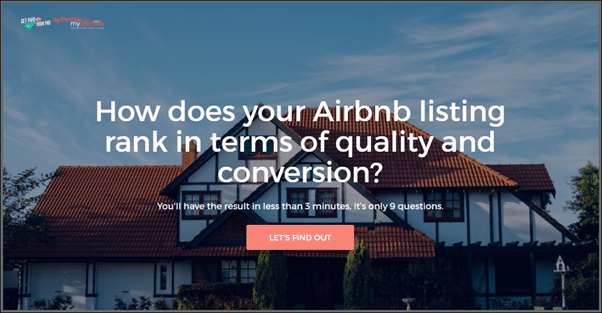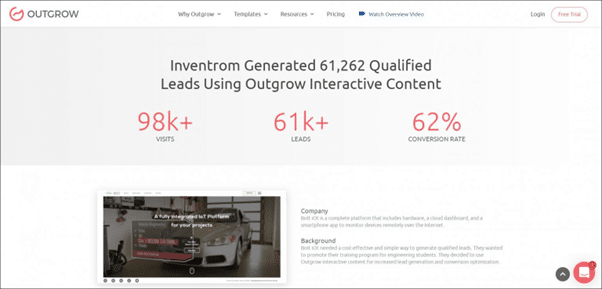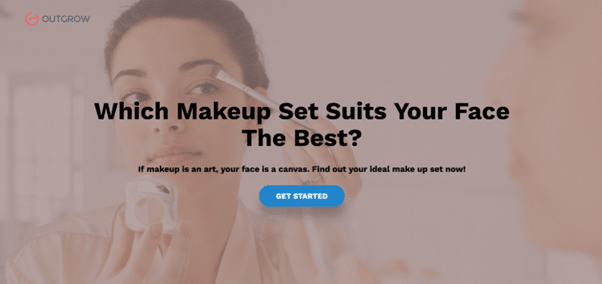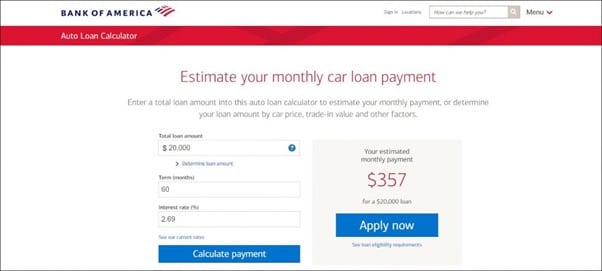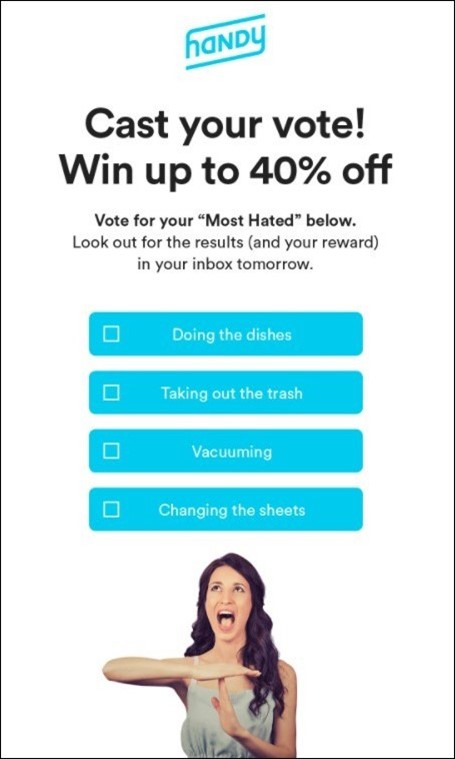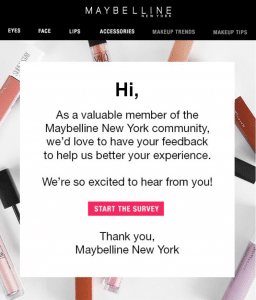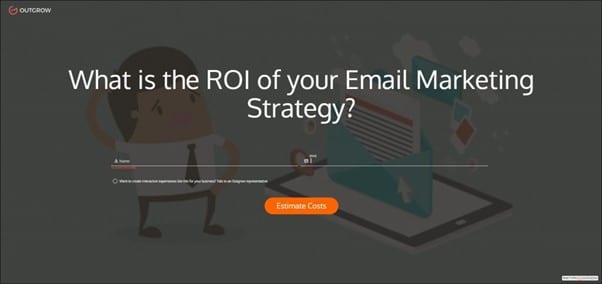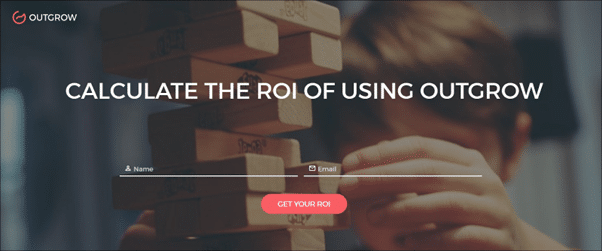What Is Interactive Content? – How to Use and Create It
Table of Contents
Did you know that when people engage with interactive content, they retain almost twice as much information compared to when they read words alone? In fact, 45% of B2B customers say that interactive content is one of the most preferred content types.
The reason for this is simple – people are willing to give more time, attention, and focus to engaging with interactive content. Moreover, it helps in solving business problems – 51% of B2B clients say that interactive content is helpful in tackling business challenges.
When used for marketing, interactive content improves your lead acquisitions, conversions, and engagements.
Need we say more?
So let’s dive right into this blog, where we will define interactive content, describe its benefits, popular types, use cases, and quick steps on how to create one without any coding!
What Is Interactive Content
Interactive content actively engages and involves the audience, allowing them to interact, participate, and make choices.
The purpose of interactive content is to enhance user experience, capture attention, increase engagement, and provide personalized and dynamic interactions. It often encourages users to share opinions, gather information, receive tailored recommendations, or solve problems.
Unlike static content, interactive content requires user input, response, or engagement, transforming the passive viewer into an active participant.
It’s more like a two-way conversation between you and your audience. It requires active participation from both sides.
Confusing? Let’s break ‘Interactive Content’ down to its last atom.
What Makes Interactive Content So Powerful
1. It Attracts and Engages the User
81% of marketers agree that interactive content grabs user attention more efficiently than static content. Not only that, the interactivity of the content keeps the audience engaged for a longer period of time. It can be personalized to a great extent even in real-time. Also, the dynamic nature of interactive content urges the user to interact with the content. And this increases user engagement.
2. It Helps in Lead Generation
Interactive content is better at generating leads than static content. Interactive experiences like calculators, quizzes, and assessments offer real value to the user. And users tend to give up their contact information willingly if they get something in return.
For example, Mortgage calculators help users to calculate their monthly mortgage payments. So companies selling financial services can use this calculator to generate leads.
Must Read: Interactive Lead Generation Techniques
3. It helps in lead nurturing and customer acquisition
Lead nurturing is the process of establishing and maintaining a relationship with the buyers at every stage of the sales funnel. It requires marketing and communication efforts personalized to the needs of every prospect. This helps to improve brand awareness, build trust, and maintain a steady relationship with buyers until they convert to paying customers.
You can customize your interactive content for every stage of a buyer’s journey and use it to nurture your leads effectively. Also, you can use the data from your interactive experiences to better personalize your communication with your prospects.
4. It helps in lead scoring and segmentation
Modern interactive content builders like Outgrow come with high analytical and lead segmenting capabilities. You can segment your leads on the basis of demographics, location, customer behavior, etc.
Segmented email campaigns are known to have 14.32% higher open rates. Also, segmentation helps you to build more personalized communication.
5. Interactive content for SEO
As SEO continues to evolve rapidly, experts recommend hiring SEO consultants to navigate these changes effectively. With every single update, and algorithm updates Google rolls out, it is becoming difficult to rank on SERP. And to add to this problem, we have the ever-changing user behavior as we have just discussed.
So, what should be your future strategy?
Well, you must leverage interactive content for SEO as well. Try using interactive quizzes, videos, infographics, etc. – anything that suits your brand. And share them on social media, run paid ads, emails, etc.
This will bring you more referral traffic and enhance your brand visibility. As a result, it will help in SEO. Also, always ensure your content is accurate, well-researched, and authored by experts. This approach will boost your website’s E-E-A-T, bolster your SEO efforts as well as solidify your online credibility and trustworthiness.
Also, if you use interactive content on your website/landing pages, it will improve your time-on-page KPI and decrease the bounce rate.
And since it is highly shareable, you may end up getting more backlinks. Everything will add up to improving your SEO.
Types of Interactive Content
By now you would have understood what interactive content is and how it works. And now it’s time to discuss the most important part – the types of interactive content you can create:
1. Interactive Quizzes
Interactive quizzes are one of the most common types of interactive content out there on the internet today.
For example, an online ADHD diagnosis quiz can help individuals better understand their symptoms and determine whether seeking a professional evaluation might be beneficial, making the process more accessible and informative.
We have seen companies like BuzzFeed built completely around interactive quizzes.
Well, there is a good reason behind it. Interactive quizzes have phenomenal stats to lure marketers. Did you know that 96% of users who start BuzzFeed quizzes finish them?
Example: Do You Remember “The Simpsons” As Well As You Think You Do? by BuzzFeed
This quiz will attract anyone who has spent their childhood watching The Simpsons. As a result, it will help BuzzFeed pull traffic to its website. And the examination is so interesting that users will stay on the site till the end of the quiz. Thus, it will improve the SEO factor for BuzzFeed.
In a similar vein, interactive quizzes can be an excellent tool for educational purposes, offering a dynamic way to learn new topics. Recognizing this, different platforms use the quiz format to provide English homework help by EduBirdie. This educational twist helps students tackle complex subjects interactively, making learning both effective and enjoyable.
Want more examples? Here you go – Our Favorite 21 Marketing Quizzes of All Time!
2. Interactive Calculators
An interactive calculator is a tool that takes user information and performs calculations accordingly. It can be used anywhere in the buyer’s journey to provide a personalized experience and push the user down the sales funnel.
Interactive calculators offer great value to the user as they can offer solutions to their pain points in a jiffy. Not to mention, interactive calculators are a great way to generate leads and establish your brand as an expert in the domain.
Let’s take a look at this case study:
Get Paid for Your Pad (GPYP) helps property owners maximize their returns as expert Airbnb hosts. To boost its lead generation, GPYP turned to Outgrow for help. And they built an interactive calculator on Outgrow’s interactive content builder. As a result, GPYP managed to score a stellar 41% conversion rate!
3. Interactive Assessments
An Interactive Assessment is a type of interactive content where the user is given a score based on the number of correct answers he/she has given.
Not to mention, it boosts user engagement and lead generation. Interactive assessments can be used throughout the sales funnel and are an excellent way to offer a personalized experience to the user. It also helps in gathering a lot of information about the audience.
Here’s a case study on how an interactive assessment helped Inventrom generate 61k+ leads.
4. Polls and Surveys
They are some of the most commonly used interactive content on social media platforms. Nowadays you don’t even need a third-party app to set them up. Facebook, Instagram, and YouTube are providing this feature by default. You simply need to select the option, edit your questions, and share!
Example: This is how Netflix uses surveys to gain feedback on its content.
Why use Polls and Surveys?
1. To get customer feedback on your products, services, content, etc.
2. You can also get audience insights like names, addresses, locations, interests, etc.
3. Also, you can gauge market sentiments like purchasing preferences, favorite brands, item categories, favored pricing, etc.
5. Product Recommendation Quizzes
Interactive product recommendations are a type of interactive tool that filters through a predefined catalog and recommends the most relevant item based on the user’s choices.
If you have purchased from any eCommerce portals like Amazon, then you must have used one. Did you know that 35% of Amazon’s revenue is generated by its recommendation engine?
Example: Here’s a popular one. Have a look at this makeup recommendation quiz. It not only asks relevant questions to give the best recommendations but also links the products on the results page to boost the eCommerce company’s sales.
6. Interactive Infographics
Did you know: Infographics receive 3X more likes and shares on social media than any other type of content?
Now that explains why 65% of the brands use infographics in their content marketing strategy! Having said that, you can already imagine the level of competition these days! So, publishing a simple static infographic won’t give you enough traction.
In order to stand out, you need to go interactive. This will not only attract your audience but also engage them. However, make sure to use a cloud storage tool to save and backup all the infographics and creative assets you use in your inbound marketing efforts.
7. Interactive Video
It is a type of video that takes user input and acts accordingly. In simpler terms, interactive videos have clickable areas designated for specific actions. They play like normal videos but at the same time are capable of performing actions based on user input.
89% of people agreed that they wanted to buy a product/service after watching an interactive video.
In addition to the play, pause, and rewind features in traditional videos, interactive videos give you the liberty to directly interact and control the content of the video.
With the help of certain tools, you can add features like click, drag, scroll, hover, etc. to your videos. Although there are numerous types of interactive videos, here are some that might pique your interest:
1. 360-degree view videos
2. Video quizzes
3. Movies with multiple narratives or paths to personalize the story
4. Videos with clickable parts (hotspots) that show hidden pieces of information or in some cases can redirect the user to new web pages
5. A shoppable video showcases products in action, offering a real-life view and enabling viewers to buy directly from the video.
8. Interactive Flip-Books
Interactive flip-books are PDFs that you can flip and offer an engaging experience to readers.
They contain interactive elements like images, videos, links, and buttons.
You can use a flipbook maker to create flip-books and share them with readers or customers. Such tools offer the possibility to transform PDFs into digital catalogs where you sell products directly from the pages of magazines where you share engaging and easy-to-read news.
You can also create interactive newsletters, portfolios, brochures, reports, and other marketing materials to share with your audience. Just remember that effective brochure marketing specifically means creating a compelling brand narrative.
How to Create Interactive Content
We have understood what is interactive content and the different types of content you can create. But how do you create one? Here’s a friendly step-by-step guide for you.
Define your goal and understand your audience
Before you start creating interactive content, it’s important to determine your purpose. What do you hope to achieve with your content? Are you trying to educate your audience, entertain them, or gather information from them? Once you know your purpose, you can start to develop a plan for your content.
To create interactive content that resonates with your audience, it is important to understand their preferences, interests, and pain points. This will help you create relevant and engaging content for them. There are various methods to do this but our recommendation is to use a tool like Outgrow. You can create polls/surveys using Outgrow just by selecting a premade template or you can create your own from scratch.
Choose the Right Format
Consider your goals and your audience when choosing an interactive content format. Surveys and poy are more likely to give up their contact information. And even ills are great for gathering information from your audience. Calculators and chatbots can help your audience by providing instant solutions to their queries. Interactive quizzes and videos can be fun and engaging.
Plan the structure
Plan the flow and structure of your interactive content. Decide what questions, choices, or steps your audience will interact with. Think about the logical progression that will keep them engaged and lead them toward the desired outcome. Make sure your content is engaging, intuitive, and easy to navigate. Avoid complex navigation or too many steps that might confuse your audience. If you’re working with a large team, consider making use of a content collaboration tool to keep everyone on the same page.
Create compelling content
Create engaging and thought-inducing questions, scenarios, or challenges that will capture your audience’s attention. Make your interactive content visually appealing by adding images, GIFs, videos, or interactive elements. These elements enhance the user experience and make the content more engaging, aligning with different (coaching styles) to effectively reach and resonate with your audience. Make sure your content is informative, entertaining, or valuable enough to encourage participation.
The best way to create interactive content is with the help of a tool like Outgrow. Outgrow offers a user-friendly, no-code platform that empowers you to create interactive content without the need for coding or technical expertise. With a variety of content types, customization options, and seamless integration capabilities, Outgrow makes it easy for businesses of all sizes to engage their audience and make them loyal customers.
Creating interactive content with Outgrow is a very simple process.
1. Sign up for a free account.
2. Choose your content type. Outgrow offers many interactive content options, from quizzes and polls to calculators and assessments. Select the one that aligns with your goals.
3. Choose your favorite pre-designed templates and customize them or make your design from scratch.
4. Now you can add interactive elements to your template such as questions, options, and choices for your audience to engage with. Depending on your content type, you can create branching logic, conditional messaging, and personalized outcomes based on user responses.
5. Once you’re satisfied with your interactive content, publish the content. For increasing its visibility, add it to your website, landing page, or social media channels in different formats. You can also take the help of email newsletters to automate your work
This is how easy it is to create interactive content with Outgrow. But if you are facing a crunch of time or resources, you can also let the Outgrow AI tool make amazing interactive content for you. Just answer a few questions and you’re done!
Test and Optimize
Before sharing your interactive content with your audience, thoroughly test it to make sure it works smoothly and delivers the intended experience. Gather feedback from a small group of users to identify areas for improvement. Outgrow also allows you to perform A/B testing on the content that you create so that you know what is performing well.
Promote and distribute
Once your interactive content is ready, promote it through your website, social media channels, email campaigns, or other relevant channels. Consider embedding it in blog posts or sharing it with influencers to increase visibility. Outgrow offers multiple embed options using which you can promote your content piece as a part of your website.
Analyze and Iterate
Monitor the performance of your interactive content using analytics tools. Track engagement, completion rates, and user feedback. Use this data to identify what works well and make iterative improvements to enhance future creations. To ease up your work, consider an interactive content platform that comes with an inbuilt analytics tool.
Use User-Friendly Tools
Choose easy-to-use tools and platforms that are specifically designed for creating interactive content. These tools often have pre-designed templates, drag-and-drop interfaces, and customization options to make the creation process easier. They even come with robust analytics, automation, and integration features.
One of the best platforms offering these features is Outgrow.
Outgrow is a platform for interactive content marketing that simplifies the process of creating personalized quizzes, calculators, assessments, recommendations, polls, and chatbots. It enables you to enhance lead acquisition, qualification, and activation without the need for developers or designers.
How to Use Interactive Content?
Now you know what types of interactive content are there and how you can create them. But before you plan to include them in your marketing plan, let’s reveal some of the ways in which you can use these powerful content types.
Thanks to the flexibility of interactive content, it can be used to draw traffic and generate leads in a lot of different ways. Here are a few ways (best of the lot) to use it:
1. Interactive Ads
They tend to encourage the user to physically interact with the advertisement. The engagement rate is quite higher than in passive ads. Because in static ads the viewer can only see, scroll, like, or comment on the ad piece.
Example:
Mercedes Benz was looking to increase engagement on its social media pages. They created an interactive calculator and used it with their Facebook ad that allowed the users to determine their insurance premium cost.
This ad helped them gather 6.7k likes and numerous views within 7 days of going live.
Why Should You Use Interactive Ads?
Interactive ads have the best engagement rates
Studies show that interactive ads have 3 times more CTR (Click Through Rate) than non-interactive ads.
Interactive ads have better lead conversion capabilities
It helps the user to make informed decisions. Suppose you are running an interactive ad for your new mobile game. The user can play a part of the game in the ad itself. And if they like the experience they will fill up your lead form which naturally has a better conversion rate.
Interactive video Ads have 3x the conversion rate compared to traditional video ads!
Interactive ads can help you generate more user data than passive ads
They can provide you with more user data than you can imagine! Say for example if you run this interactive content as an ad you can get information like budget, company size, and requirements.
All that extra data can help you in better segmentation leading to more personalized communication/offers and ultimately will deliver better conversion rates.
2. Interactive Post for Social Media
In recent years there has been an explosion of content on social media. Also, in recent years we have seen how organic reach has decreased on social media platforms. The only way to boost organic reach is by engaging your audience on your posts. More engagement, more reach. Hence, brands are shifting to interactive content because they can attract and engage better than static posts.
“Branded Facebook pages only reach about 2% of fans with organic posts”
Example: This GOT quiz was shared 4k+ times on social media.
Did you complete the quiz? Sure you did! That’s interactive content for you!
If you want to learn more about social media marketing with interactive content, then read this: 6 Ways Interactive Content Can Power Your Social Media Marketing
3. Interactive Landing Pages
An interactive landing page guides the user through an interactive experience toward the desired outcome. The user can directly interact with the content on the landing page. On the other hand, in static landing pages, users can only read, click on links, and in some cases fill out a lead form.
Example: Have a look at this interactive landing page created by Bank of America:
This will definitely attract and engage the user because it is solving their problem without even asking for contact information. The audience can choose whether or not to share their personal info.
Naturally, the company has not only managed to keep the user engaged for a longer span of time but also developed a sense of trust. And most importantly, they might as well get the lead (a more qualified lead, that is).
Must Read: 10 Reasons Why You Need to Ditch Static Landing Pages for Interactive Calculators
Why should you use Interactive landing pages?
– Increases time-on-page:
One of the biggest benefits of interactive landing pages is that they improve the time-on-page KPI. Simply speaking, these landing pages keep the user engaged and encourage them to stay on the page for a longer span of time. As a result, brands get more exposure and awareness. Also, better time-on-page figures add up to better SEO.
– More user data:
As we discussed earlier, interactive content provides more data that you can use for better segmentation, personalized communication, etc.
– More leads:
Interactive landing pages are more attractive, engaging, and most importantly helpful. And users tend to give up their information willingly when they find something useful.
4. Interactive Emails
They are nothing but interactive content like quizzes, assessments, etc. embedded in an email. Not to mention, by using interactive emails you can leverage all the benefits of interactive content.
Examples:
– Handy is an online marketplace for residential cleaning, installations, etc. And they ran this interactive email campaign to generate more user data, improve brand loyalty, etc. It is nothing but an interactive experience embedded in an email where the user can vote and win.
– This is a classic example of an interactive email by Maybelline New York. It’s an interactive poll embedded in the email. The campaign helped Maybelline increase its customer engagement, gauge customer satisfaction, and above all, build a loyal customer base.
Why Should You Use Interactive Emails?
– Interactive emails improve click-through-rate
“According to Campaign Monitor, interactive email content increases the click-to-open rate by up to 73%.”
– More user data resulting in better personalization
As the user proceeds with the interactive experience in the email, you can use the data to personalize the content in real-time.
Must Read: 9 Interactive Content Promotion Best Practices
Tips to Create Interactive Content
1. Think before you create
Before you start to create your interactive experience, take some time to think about your target audience.
Figure out your audience persona.
According to your findings, decide what type of interactive content suits your audience. Try using interactive infographics if you have a busy audience with very little attention span. Or if you are dealing with products that are visually appealing (like tourism packages) you can try out interactive videos and images.
And if you have a broad audience from different backgrounds, try creating interesting quizzes, assessments, polls, etc.
Create content that adds value to the users rather than making a sales pitch. Do not use marketing tools in the content. Rather, it should entertain, engage and provide value so that the users can learn about your brand.
Identify your audience and gather as much information about them as possible. Then, create content that is aligned with their interests and outlook.
There are certain tools available that can provide the required information and BuzzSumo is a good source.
Create content that provides information and showcases your expertise in the area. The focus should be on shareable media that users can share with their friends and create brand awareness.
2. Think long term
One of the key advantages of interactive content is that it is reusable. So, fix your future goals and plan your entire interactive content accordingly.
If you do not plan ahead and create content just for your short-term goals, you will have to keep creating the entire content over and over again. On the other hand, with a set long-term goal, you simply need to modify one or two aspects of your content as you move forward.
3. Maintain your brand aesthetics
Appearances do matter sometimes. Since interactive content relies on visuals, the content needs to be well-presented and visually pleasing. It makes the posts more attractive and eye-catching.
Maintaining a synergy between your brand aesthetics and content is quintessential for building a better brand identity. Design your content according to the style, color scheme, and typography of your brand.
Also, create content that goes with your line of business and speaks the tone of your brand.
Must Read: How to Create Kickass Interactive Content
How Does Interactive Content Add Value to Content Marketing?
Well, unless you’ve been in hibernation for the last decade, you must have heard the phrase – Content is king!
But the problem lies with the decreasing attention span of users. There’s no denying the fact that we are being exposed to a sea of information every single day on the web.
“In 2023, over 7 million blog posts are being published daily.”
And social media platforms like Instagram are constantly bombarded with promotional content. Nowadays users simply scroll away from brand posts in the blink of an eye if they don’t find them attractive enough.
“95 million photos and videos are being uploaded every day on Instagram.”
So how do you stand out in this mess? The answer is interactive content. You must add interactivity to your content marketing strategy.
Adding interactive content to your content marketing strategy will help you in:
– Grabs users’ attention
Static content only allows users to passively look at your content. Whereas interactive content will encourage them to interact and spend some time on it while retaining their attention for a longer span of time.
“ 81% of marketers say that interactive content grabs more attention than static content ”
– Provides instant value
Take for example this interactive calculator that lets customers analyze the ROI of their email marketing strategy.
It is suitable for today’s customers because the content provides valuable insights in real time within minutes. This makes your content marketing really effective and worthy.
– Delivers personalized answers
Interactive content is a super tool because it provides personalized answers to each query. This way, you can gain more insight into your user’s activities and preferences than normal static content. You can use this information to better personalize your content marketing strategy for future follow-ups.
“ 88% of marketers say that 10% of their static content will be updated to interactive content within 2 years”
Let’s just update the statement ‘Content Is King’ to ‘Interactive Content Is The New King’.
How to Boost Lead Generation by Leveraging Interactive Content
1. Awareness stage
As we know, marketing is no longer only about generating leads for the sales team. The sales team no longer needs to educate the buyers. Most buyers perform research online before they approach the sales team. Hence, they are already qualified and informed. One research indicates that more than half of a buyer’s journey is completed online. They only approach the sales team when they are ready to buy. Hence, the role of the marketing team has changed.
Now, marketers must optimize every stage of a customer’s journey through the funnel to deliver results. This is where interactive content can play a very important role. Since it creates a two-way interaction, interactive content can help in all three stages of a consumer’s path but has the greatest advantage in the early stages.
Here the consumer is likely to research and educate himself/herself. This is the first stage where the consumers discover a need that has to be fulfilled. They search around and learn about products that can provide a solution. At this stage, brand awareness does not matter. They just want to find a suitable solution to the problem.
Information is crucial at this stage. Marketers should aim to provide as much information as possible. Also, this is the stage where it is most easy to gather information about the users. At this stage, use interactive content like quizzes, polls, assessments, interactive infographics, contests, polls, eBooks, etc. to provide as much information to the customers as possible. At the same time, create content that will help to collect information about consumer needs and expectations. Consumers are likely to give the information happily at this stage as they believe they are getting real value out of the exercise.
Example
Have a look at this graded quiz by Outgrow. This interests the prospects and informs them about a problem that may not be apparent to them. Moreover, you can collect leads by putting your lead generation form before the results page.
2. Evaluation Stage
At this stage, the consumers evaluate the products available to decide whether they fulfill their needs or not. By now, the users know what will help to solve their problem. They have already shortlisted a list of brands that can provide what they are looking for. They are evaluating the shortlisted products and comparing them for greater clarity on pricing, approaches, and options.
At this stage of the consumer’s path, the content needs to be product-centric. The content should throw light on the understanding of the problem while providing the best solution through the product. The type of interactive content that works best at this stage includes calculators, interactive eBooks, white papers, wizards, etc. This type of content helps to explain the product, its uses, features, and its cost. Also, it presents an opportunity for the consumer to make comparisons between the products.
Example
Have a look at this quiz by Outgrow. Such quizzes are perfect for the evaluation stage because they are product-centric and provide the prospect with a solution/suggestion in real-time.
3. Decision stage
This is the last and perhaps, the most critical stage of a consumer’s journey. This is the time when they commit to buying the product. They have studied the solutions available to them. Also, they know which solution will work best.
At this stage, they need reassurance and convincing that they are making the right decision. They are, literally, sitting on the fence and just need a little nudge to make them commit. Now is the time to produce hard facts to support your claims. The interactive content that is most likely to work at this stage includes configurators, cost analysis, testimonials, etc.
Example
Here is an example of an interactive calculator that is a perfect fit for this stage. This product-centric calculator is fun, fast, and super friendly. It highlights what the prospect has to gain if s/he chooses that particular product.
Based on the feedback from marketers and what we can see above, interactive content is most effective in the first stage of the funnel. It has proven to be an invaluable resource for educating and qualifying the leads. It is the least effective at the last stage, where human factor or static content may work best. Despite its limitations at the later stages of the funnel, it still provides great value to marketers in pulling them into the funnel.
Statistics for Interactive Content
Last year, interactive content had a share of $35.2 billion in the advertising industry. It is inclusive, exciting, disruptive, and profitable. It makes the buyer feel a part of the process, hence its growing popularity. Looking at the statistics, it is pretty clear that marketers believe in its potential as a marketing channel.
Visual content is 40 times more likely to be shared on social media and is twice as effective in conversions, especially in the early funnel stages.
1. Customers who utilized interactive content experienced a 94% rise in content views compared to those who relied on conventional, non-interactive content.
2. 88% of marketers agree that it helps in brand differentiation and advocated that up to 30% of all content should be interactive.
3. Interactive content outperforms static content, providing 52.6% higher engagement rates.
4. Buyers tend to spend an average of 8.5 minutes on static content items, whereas their engagement increases to 13 minutes when engaging with interactive content.
The figures clearly state the importance of interactive content and marketing. Businesses that ignore this growing trend may find themselves lagging behind competitors. Whereas, marketers can use it to improve acquisitions and reduce ROI.
Conclusion
By harnessing the power of interactive content, you can build a positive relationship with your audience by providing them with an outlet for creativity and decision-making. It also allows you to connect and target a more personalized user base, drawing attention to what is most important to them.
The ultimate objective of interactive content marketing strategy should be to engage your customers with the most valuable information to them at a point when they are ready to make an informed decision.
Interactive content is the future of engaging with audiences, and keeping up with the trends that will drive tomorrow’s marketing. Understanding what makes interactive content effective and how to implement it on your own website will help your business reach more users and engage your audience on a deeper level.
And before that, try Outgrow’s free trial to create your own interactive content for free!



